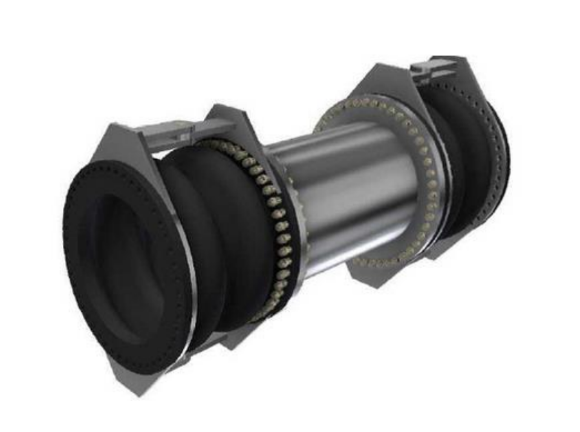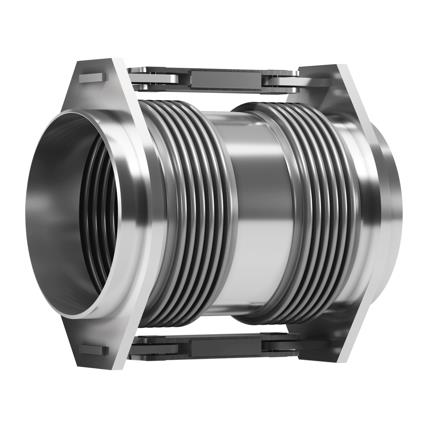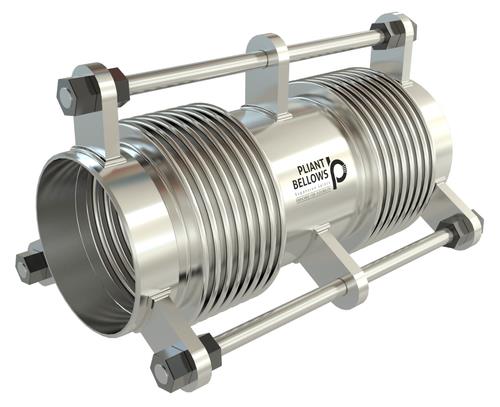Hinged Type
Product Overview
HINGED TYPE
Hinged metal expansion joints are mounted to limit the expansion joint to absorb movements in only one plane in the hinged metal expansion joints. Due to the hinges the expansion joint is not able to absorb axial movement. The hinge is likewise designed to protect the bellow from torsion. These movement limiters reduce the loads from the pressure thrust force and the temperature of the pipeline.
The pressure thrust force from the media is in this way absorbed in the pipeline. The hinges are designed to absorb a larger part of the pressure than the expansion joint is able to absorb. In this way the expansion joint is relieved and at the same time limited to absorb only the movement it is designed for. Further the hinges are designed to support the loads from pipes and connected equipment, wind stresses and other external induced stresses that add external loads to the pipeline.
- Single Hinged type expansion Joints
- Double Hinged Type Expansion Joints
Single Hinged type expansion Joints
Single Hinged type expansion joint consists of metal bellows, flanges or pipe ends and restraint system with axis of rotation. The hinged expansion joint can only accept angular movement. The pressure load produced by internal pressure is constrained by hinged parts and it is not necessary to install strong fix points and robust guiding in piping system. The pair of hinged expansion joints is convenient for pipeline with long movements.
Features
- Angular motion in all planes
- Positive control over movement
- Eliminates pressure thrust forces
- Transmits external loads
- Bolsters dead weight
- Prevents torsion on bellows
- No main anchors required
- Minimum guiding required
- Low forces on piping system
- Most efficient in absorbing thermal deflections.

Double hinged metal expansion joint is to absorb angular and lateral expansion movements with rotation on a single axis both thermal and mechanical origin.
Our double hinged metal expansion joint is composed of two bellows of several waves in the form of “U”. These waves are made by one or more metal sheets longitudinally welded and shaped hydraulically or mechanically.

